How To: Reverse Barbell Lunge
3 GOLDEN RULES!
Today, we are going to talk about to perform a Reverse Barbell Lunge to train your hamstrings, quads and glutes! Now, I recently released a video called “Leg Day Scare”, where I REALLY injured my hamstring in my right leg while lunging and I thought what better time to show you what you should avoid and what you should pay extra attention to when performing this movement.
Now, I don’t want to scare you. The Reverse Barbell Lunge is not a dangerous exercise and my injury was kind of a freak thing that only happened because I had an old injury from my late teens that never quite healed correctly. It caused a lot of instability in my right knee when I would do any single-leg movement, but because I’m stubborn I was always able to always power through any workout so I never even realized I had an issue to begin with! But as long as you follow these 3 GOLDEN RULES, you will be able to train injury free and keep making GAINS! I also have a bonus tip to help with your overall hamstring activation at the end of the article so make sure you keep reading!
Golden Rule #1 – Mind Your Step!
The most common injury with the Reverse Barbell Lunge occurs when people step too far backwards or not far enough! So let’s quickly go over both.
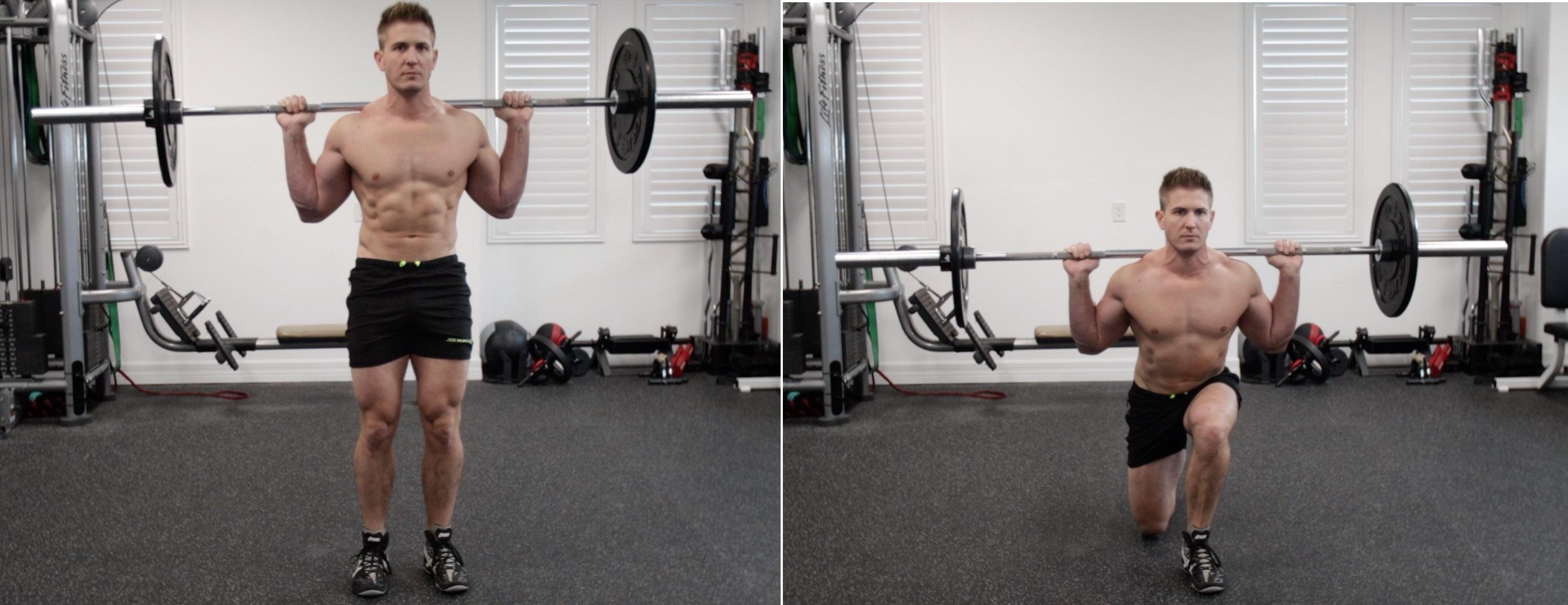
- If you step too far backwards, it’s definitely not good because your joints will not be in alignment. Watch what happens when I do it. My back knee is definitely not underneath my pelvis and my front knee is definitely not above my ankle! Now is this BAD enough to cause an injury? Well, it’s not terrible if you do it with bodyweight in your everyday life but when you start add weight on your shoulders, then it becomes a problem. This is because your muscles are not in a mechanically sound position to move the weight, therefore the possibility of a strain or pull is increased drastically! When you have weight on your shoulders you want to feel compact and tight on every rep. Stepping too far back will feel very extremely unstable.
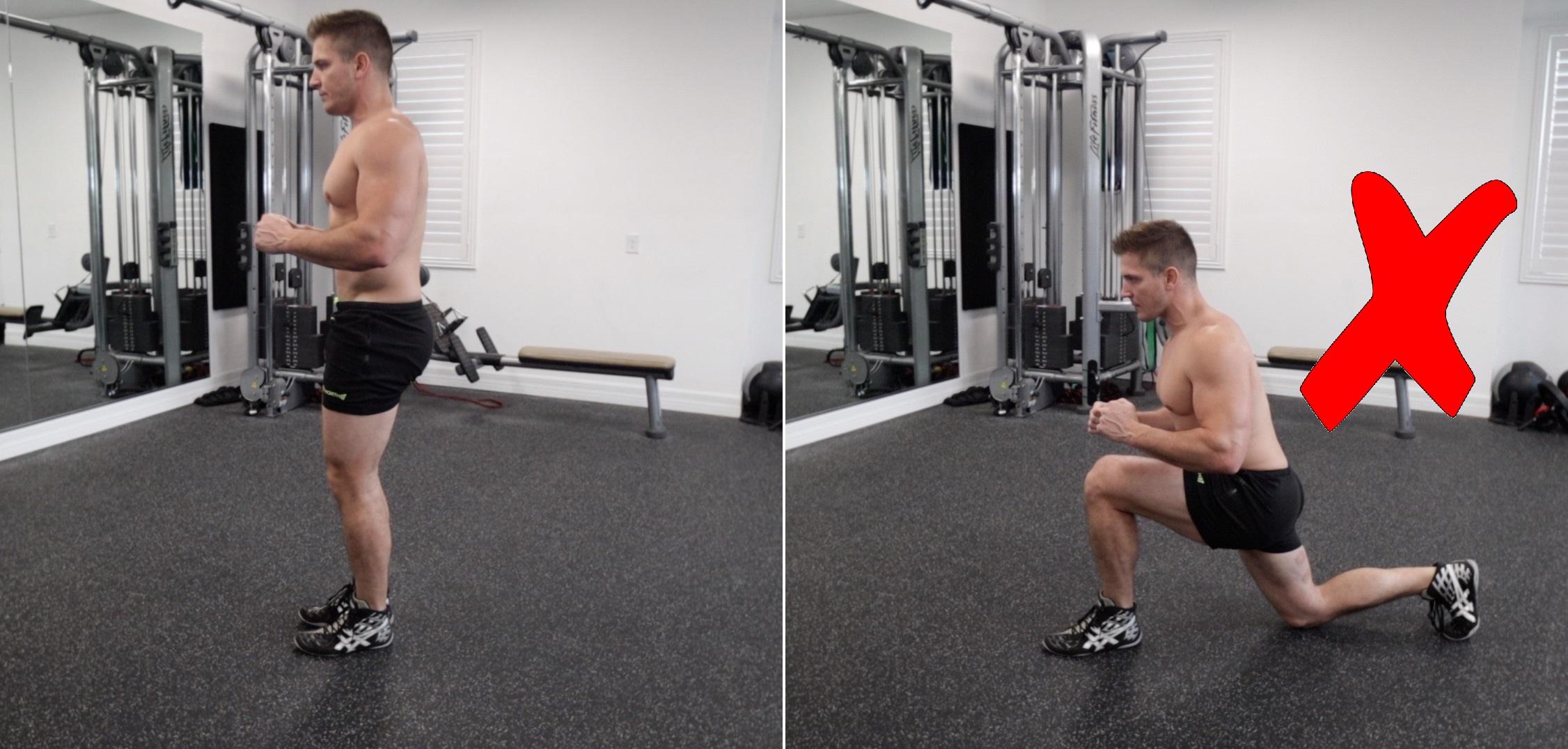
- Now, what if your back step is too short? Well, again, your joints will not be in alignment and you’re shifting the focus of the exercise from hams and glutes to QUADS by a lot and not in a good way because a lot of the tension will be in your knee. And speaking of the knees, look at the angle. They are bending way more than 90 degrees which heavily recruits the quads but also my front knee is tracking really far over toes.
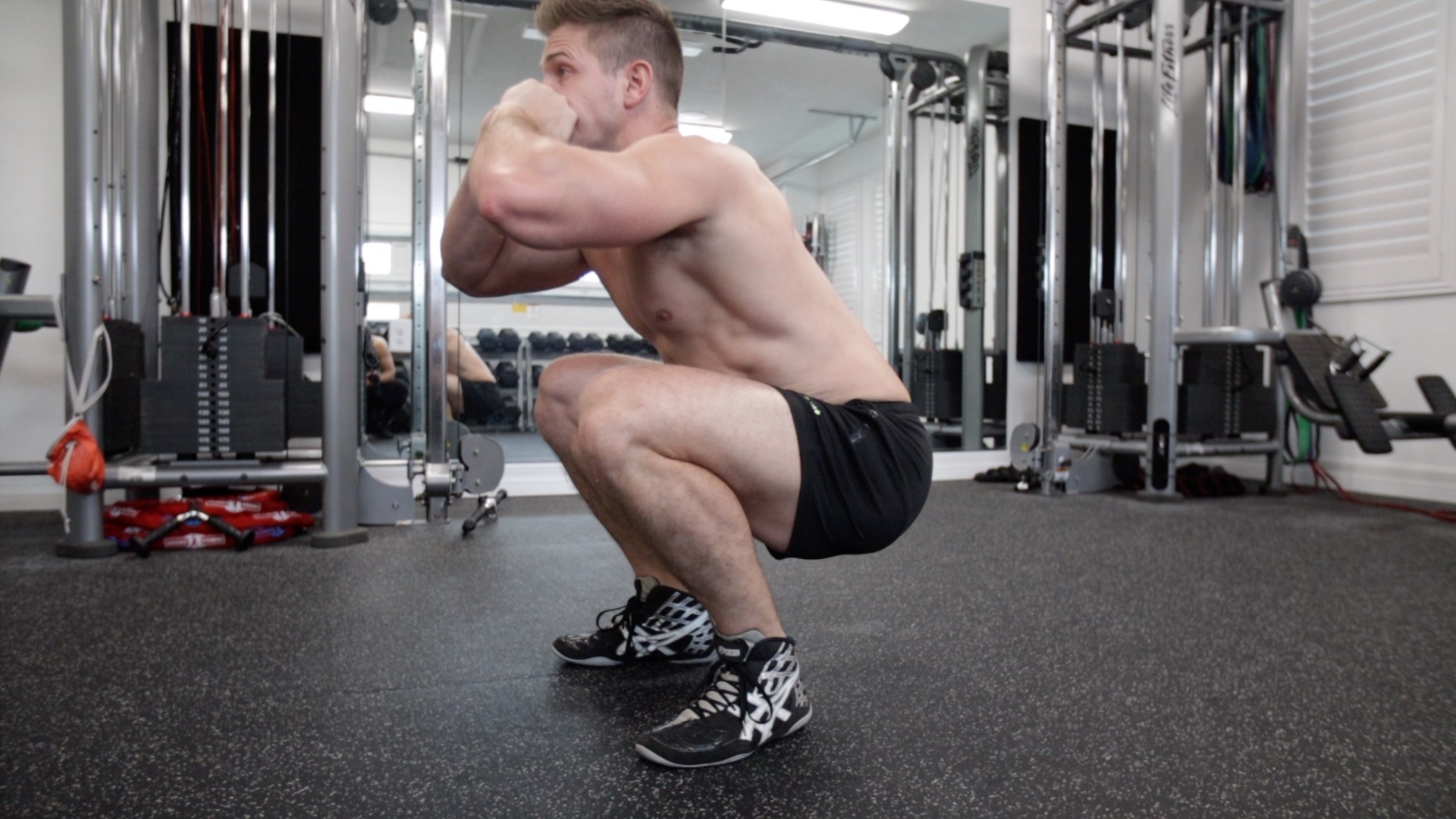
Your knee tracking past your toes isn’t always really bad, for example when squatting, but in this situation it’s not good because as I just said, we are placing a lot of the stress from the weight directly on the knee.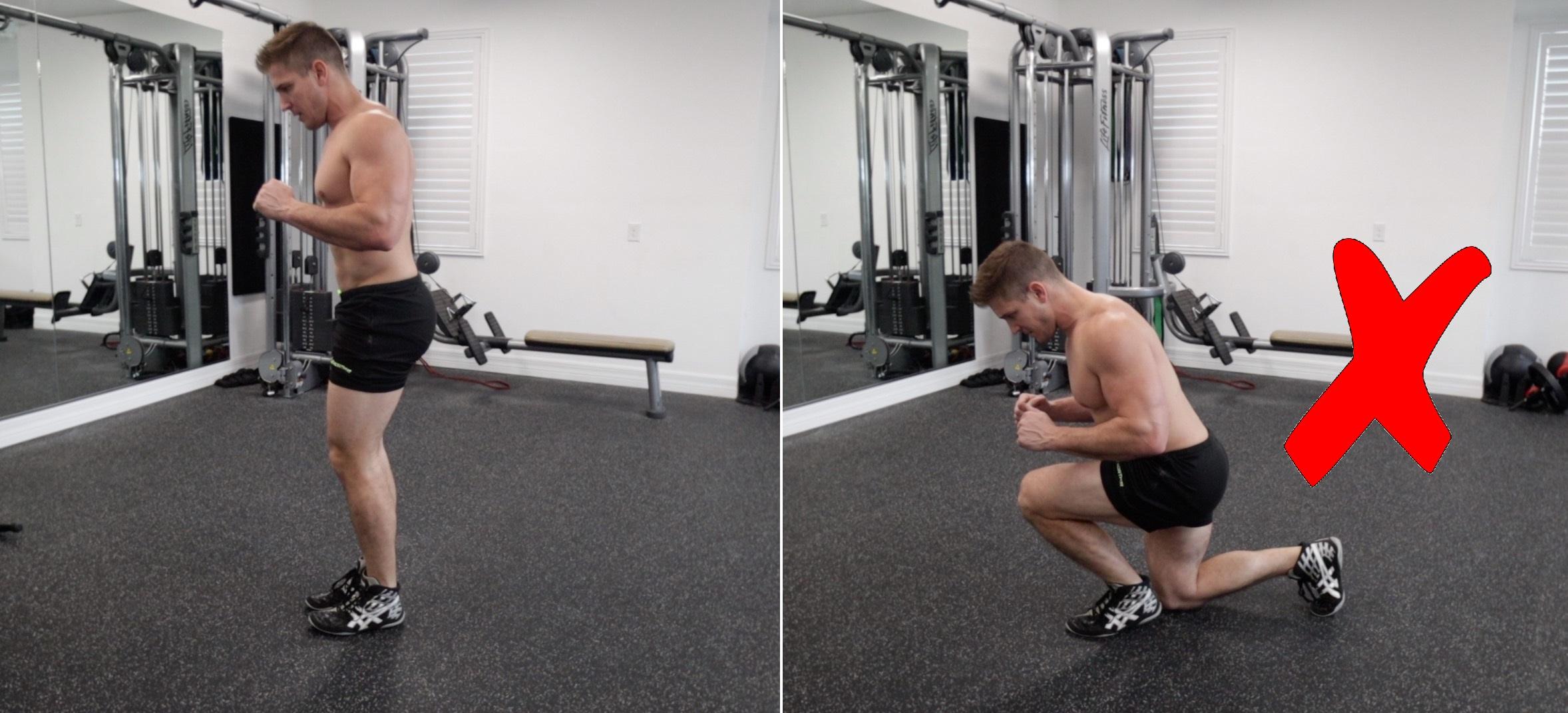
So, what’s the solution? Before you start barbell reverse lunging, perform some reps with bodyweight first until you figure out what’s the optimal step distance for you. For the most part you want 90 degree bends in both knees and above all else you want to feel STABLE while performing your repetitions.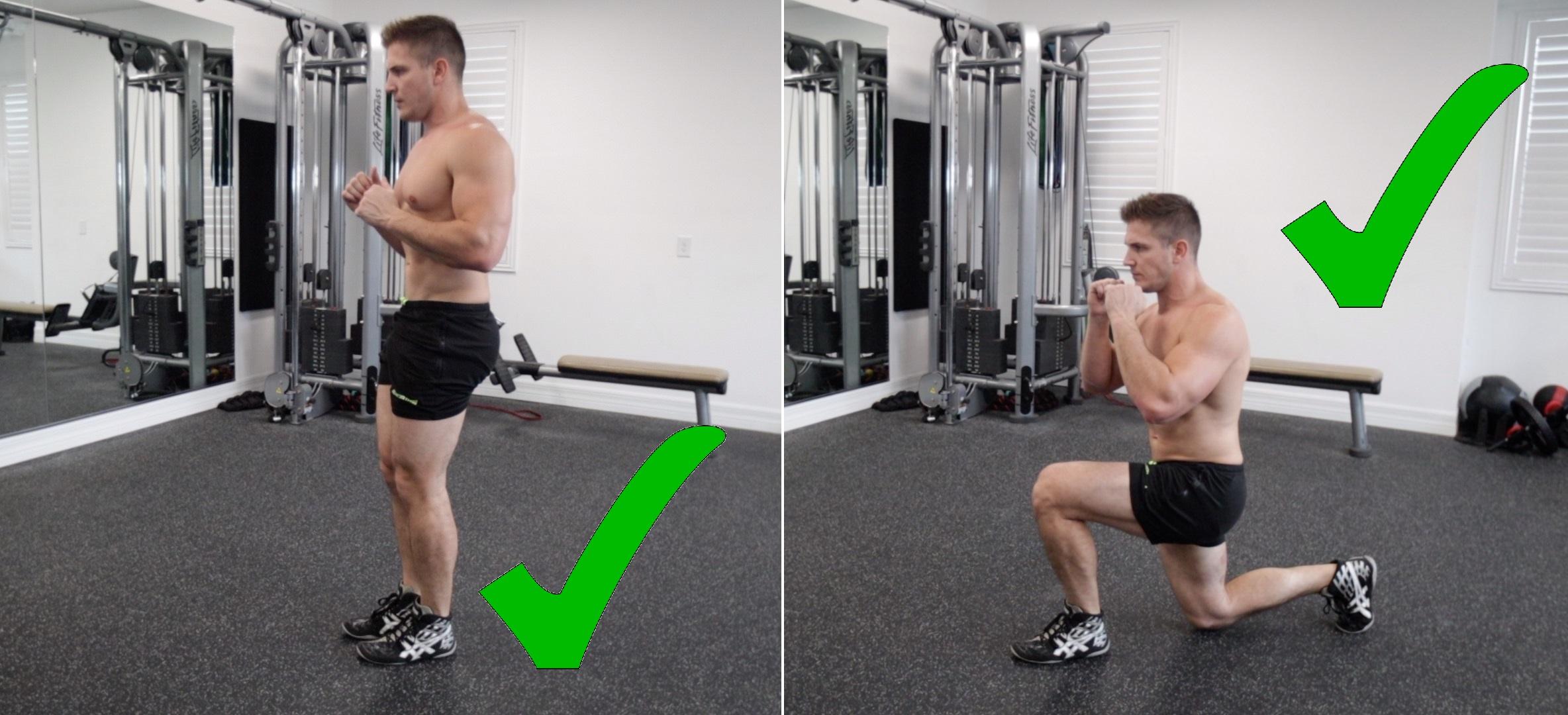
Golden Rule #2 – Keep Everything In Line
Now, this may same identical to the previous rule but bare with me for a second. In the previous rule, we talked about absolute knee angles and how far you should step back. Now, I want to talk about relative joint positioning in regards to the entire body.
This exercises starts to get problematic when you step back at an angle. This slight step-back to the side creates a lot of torque on the knee and hip joint, especially when you add resistance to the exercise. So, what I want you guys to focus on is this; keep your ankles, knees and hips all in a straight line. Your front ankle and knee should be directly in front of your hips. And similarly, your back ankle and knee should be directly behind your hips.

Also, your hips should stay square as you perform the movement. But if your hips sink to one side or the other, it means that one of your hips is tight and it might be a good time to adopt a bit more foam rolling and stretching.
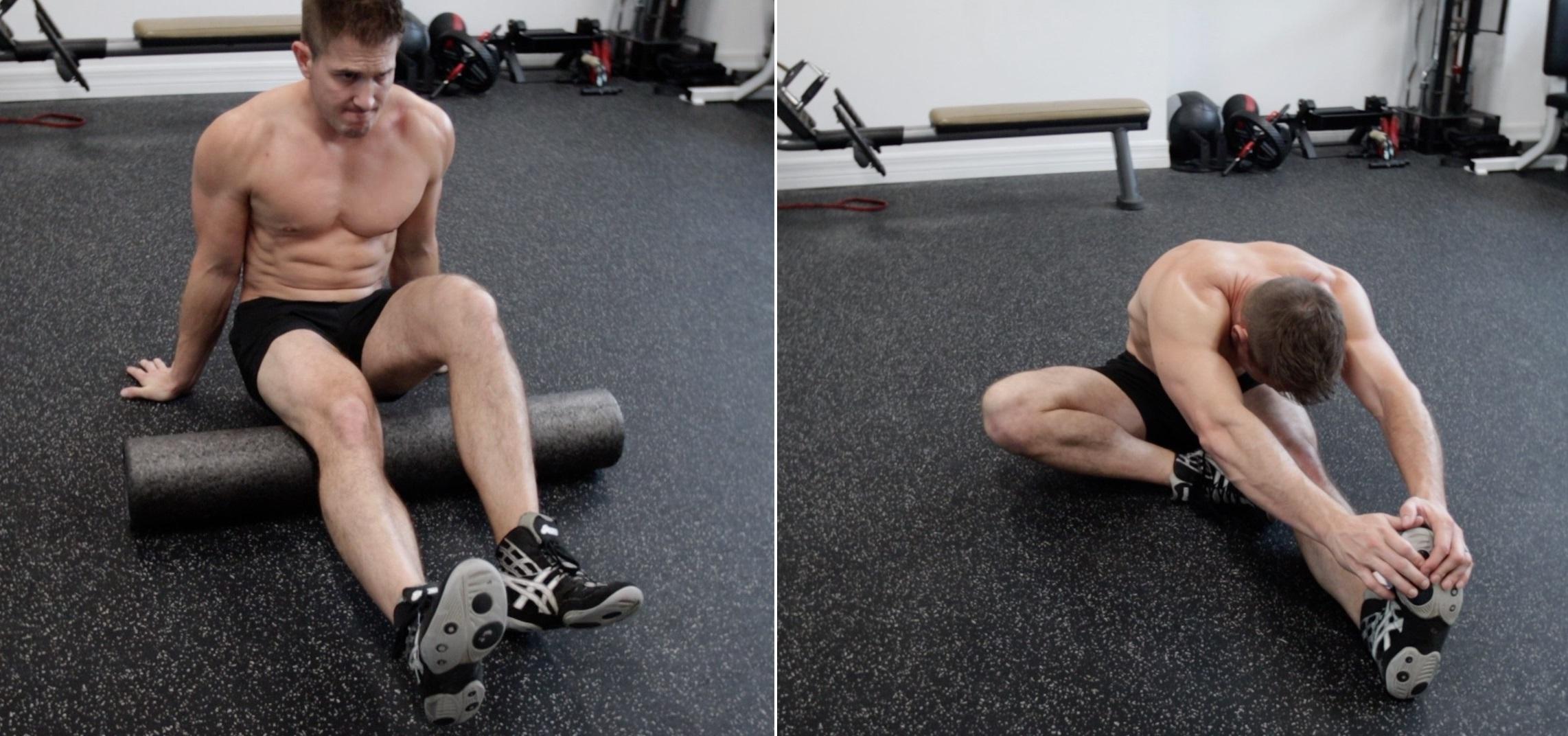
Especially if you sit a lot throughout the day.
Golden Rule #3 – Stay Upright At All Times
It should almost feel like you are leaning back slightly when performing any type of lunge. This is the best way to ensure you are keeping your torso upright and your hips directly underneath your spine.
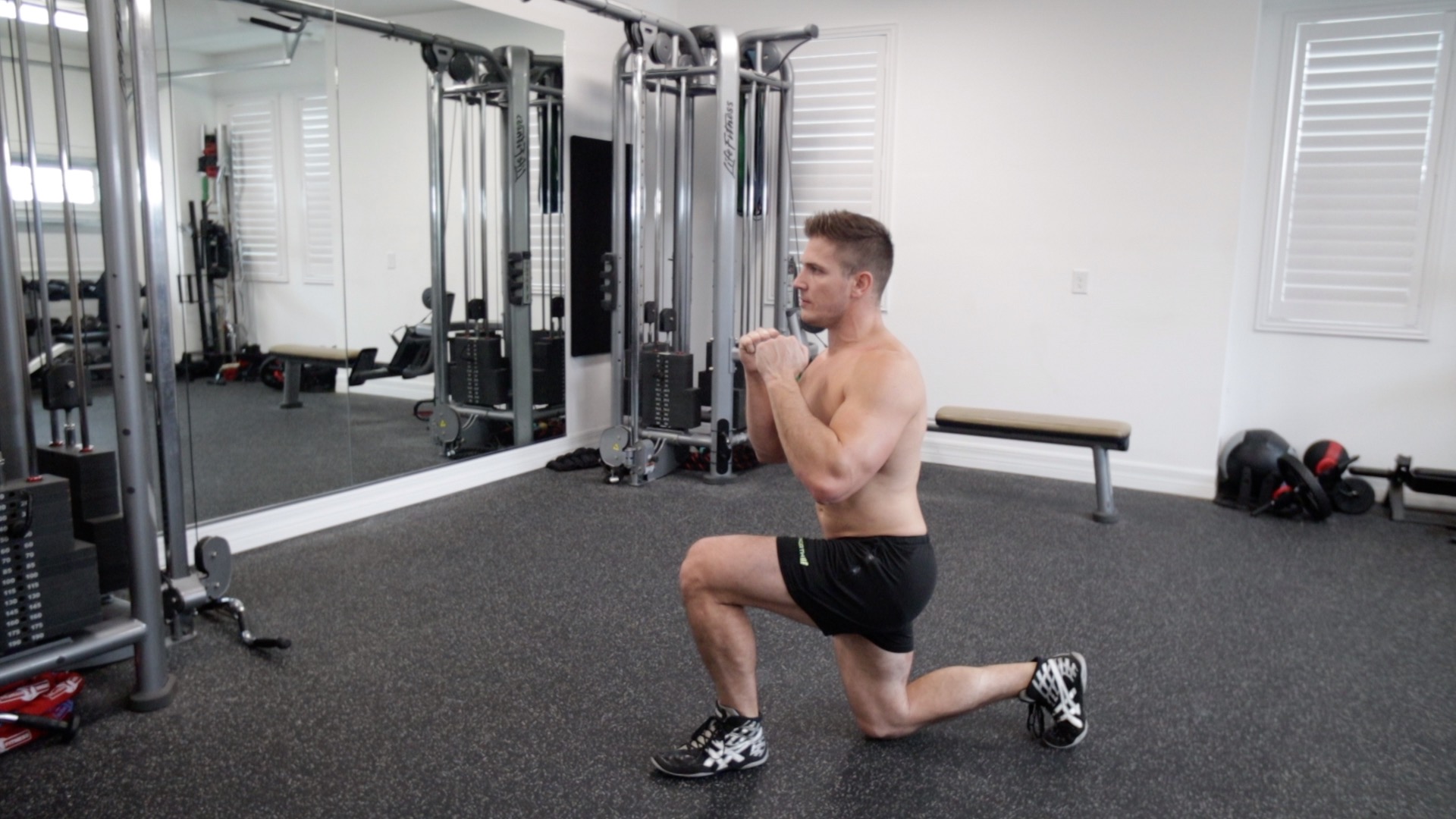
However there is a variation of this exercise that will allow you to target a bit more glutes and that is by slightly leaning forward when you reverse lunge.
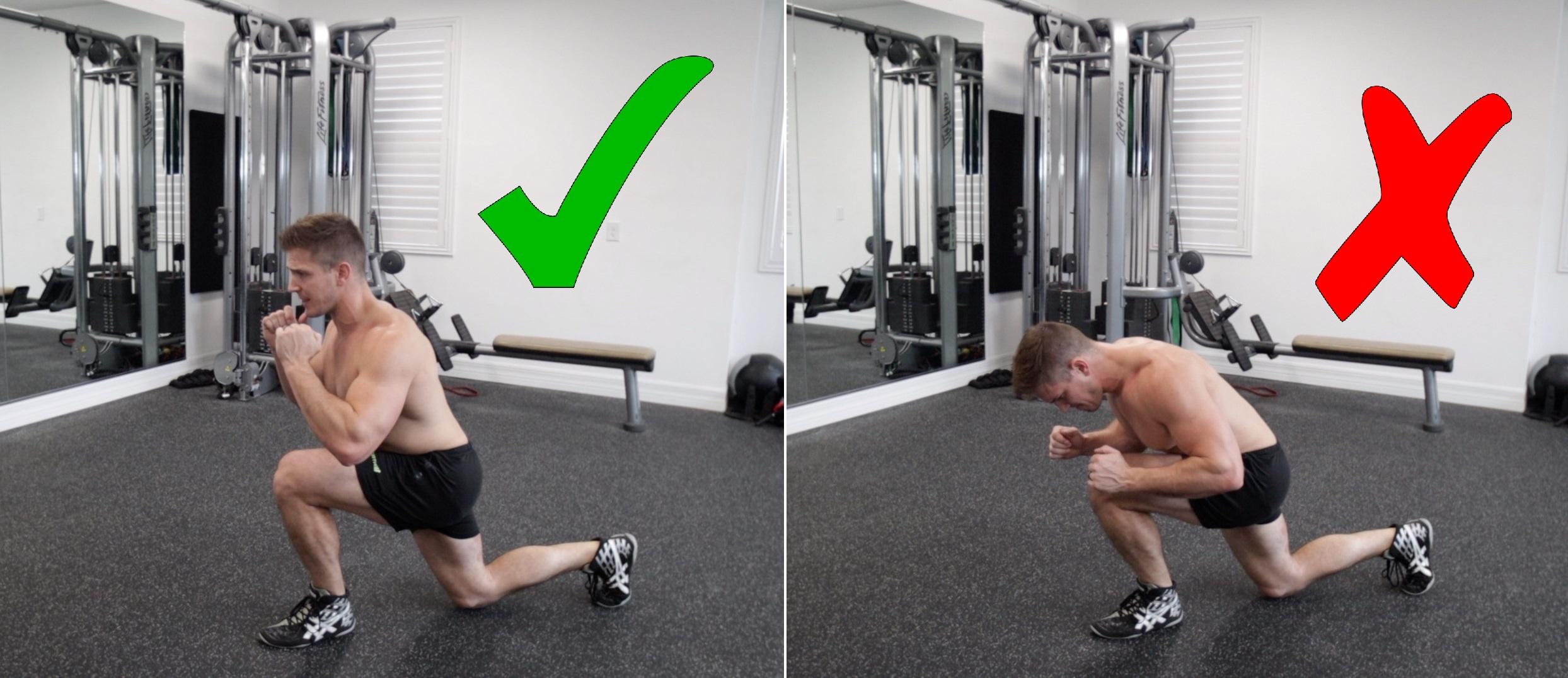
But the key difference here is that even as you slightly lean forward, you are still keeping your chest up. Too many people fall directly into spinal flexion because they just flop over as they perform the movement. This places extreme pressure on the spine and should be avoided. Also, you only need a SLIGHT lean forward to activate your glutes more. It doesn’t need to be so exaggerated. Just bend at the hip a bit more and keep your spine straight.
Bonus Tip – Mind Your Knee Stability
This is a tip coming from personal experience and it will probably apply for many of you so I want to share it with you. I may have injured myself just recently but that doesn’t mean there weren’t warning signs for months and years now. The truth is my front knee would always wobble whenever I’d do a SINGLE-LEGGED movement, like a lunge or a Bulgarian squat. I didn’t feel pain or any real tightness in my hamstring so I just assumed that my balance wasn’t as good on my right side.

So if you have that kind of instability in one of your knees when you’re lunging, then you need to address it BEFORE you start increasing the weight. So here is a quick activation drill to ensure your hamstrings are activating properly. What you are going to do is get into the bottom position of a bodyweight lunge. Once in place you are going to simultaneously push your heel into the ground while flexing your hamstring and glutes. Once flexed, begin to return back to the starting position and repeat 3 – 5 times and make sure you do this on both sides.
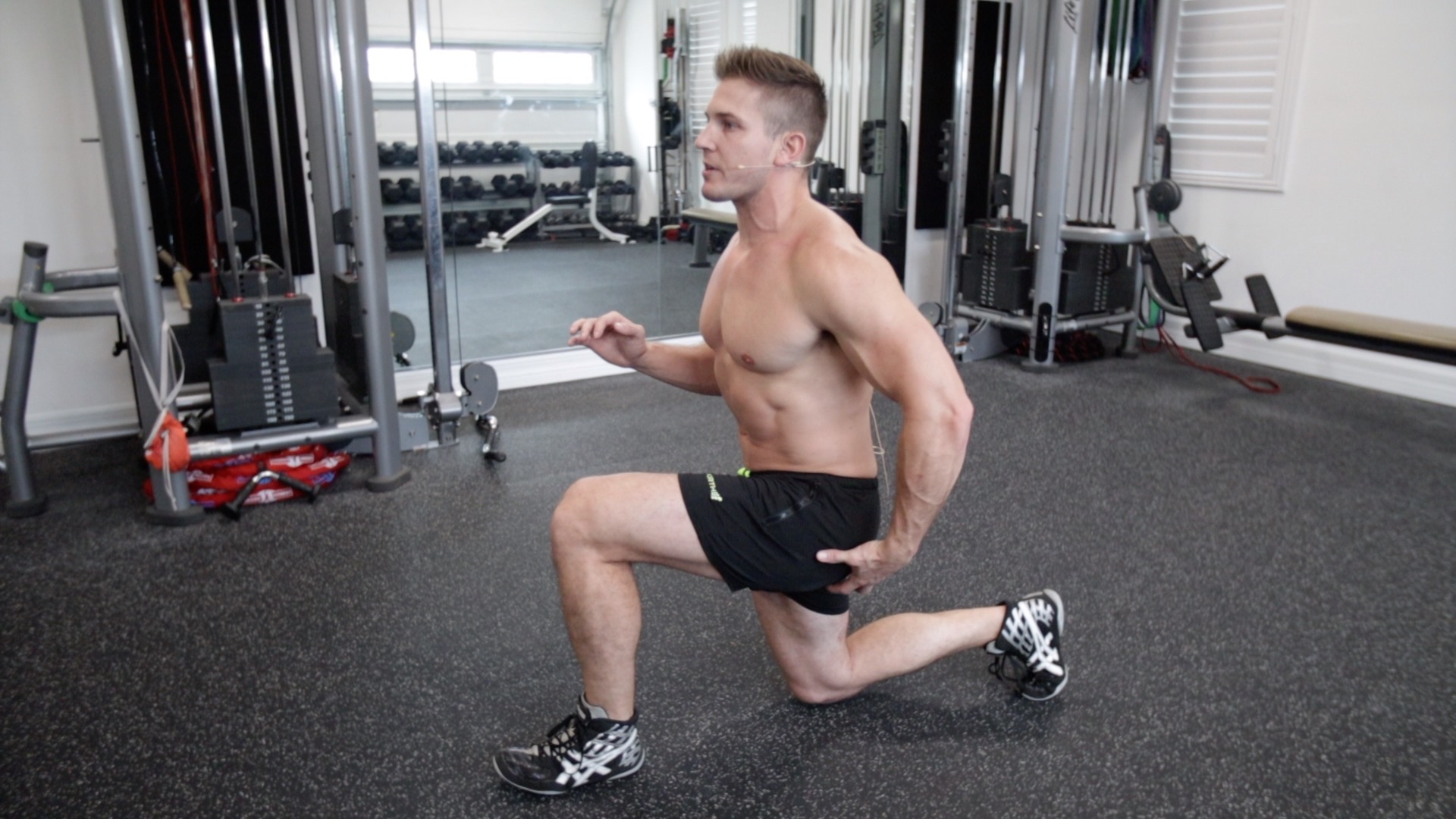
This should help reduce some of your instability and make the reps more effective at targeting your hamstrings. But if you feel tightness or pain, then maybe it’s time to see a Sports Massage therapist to have a look at your hamstrings.
Adding The Reverse Lunge To Your Training Regimen
Be sure to add the Reverse Barbell Lunge to your next leg day and if you are wondering when is the best time to utilize this exercise, it makes the most sense to do it AFTER one of your bigger lifts like Squatting or the Leg Press. However, if your hamstrings are a lagging exercise, it wouldn’t be a bad idea to start your leg day with this exercise first. Just make sure you expect to not be able to lift as much on your squat as this will fatigue your legs.
For reps and sets, a good place to start is (3 – 4 sets of 8 – 10) reps and then as you get stronger and more comfortable with the movement, you can start increasing the weight and hit more of the 6 – 8 rep range.








